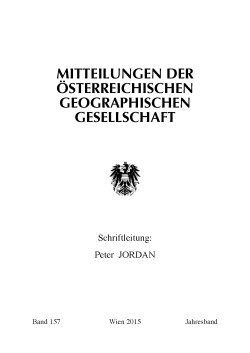
Mitteilungen der Österreichischen Geographischen Gesellschaft Band 157/2015, pp. 51-70, 2016/02/16
157. Jg. (Jahresband), Wien 2015
Commemoration events, such as those marking the enlargement of the European Union (EU), are opportune occasions to reflect on ‘what we know’ about a subject and to identify some neglected and challenging opportunities for scholars in regional studies as well as social, policy and environmental sciences. I use this occasion to look at a series of knowledge base questions, that is, how much do we know about certain topics that are important to the EU’s present and future. There is a number of indicators one might use to answer this question, such as the number of library volumes on a certain topic or journal metrics. I use Google, the major electronic database, to examine the extent of our knowledge base about EU members and potential members and related topics, including boundaries and immigration, which are central themes in annual EU deliberations. A second perspective is gained by looking at our knowledge of EU capital cities vis-à-vis ethnic minorities, religious and linguistic diversity. I chose these issues as these are important in on-going discussions about regulations and policies. I map the member country and capital city data, because I think it is the appropriate method to see the extent of gaps in what we know about these topics. I preferred schematic graphics of cores, semi-peripheries, peripheries and deep peripheries to traditional maps with state borders we are all familiar with, because they are more appropriate to depict our knowledge about Europe’s cyber worlds. Cyber boundaries are fluid, dynamic and uneven. From these schemes, it becomes clear that the geographic knowledge base is very uneven. They reveal some consistency in our knowledge about member countries and capital cities, but also a fair degree of unevenness and irregularities. The EU knowledge world contains some cores and peripheries, but also some ‘knowledge islands’ and ‘archipelagoes’, which offer challenges for future scholars.
Keywords: knowledge geographies, cyberspace, core-periphery mapping, European Union